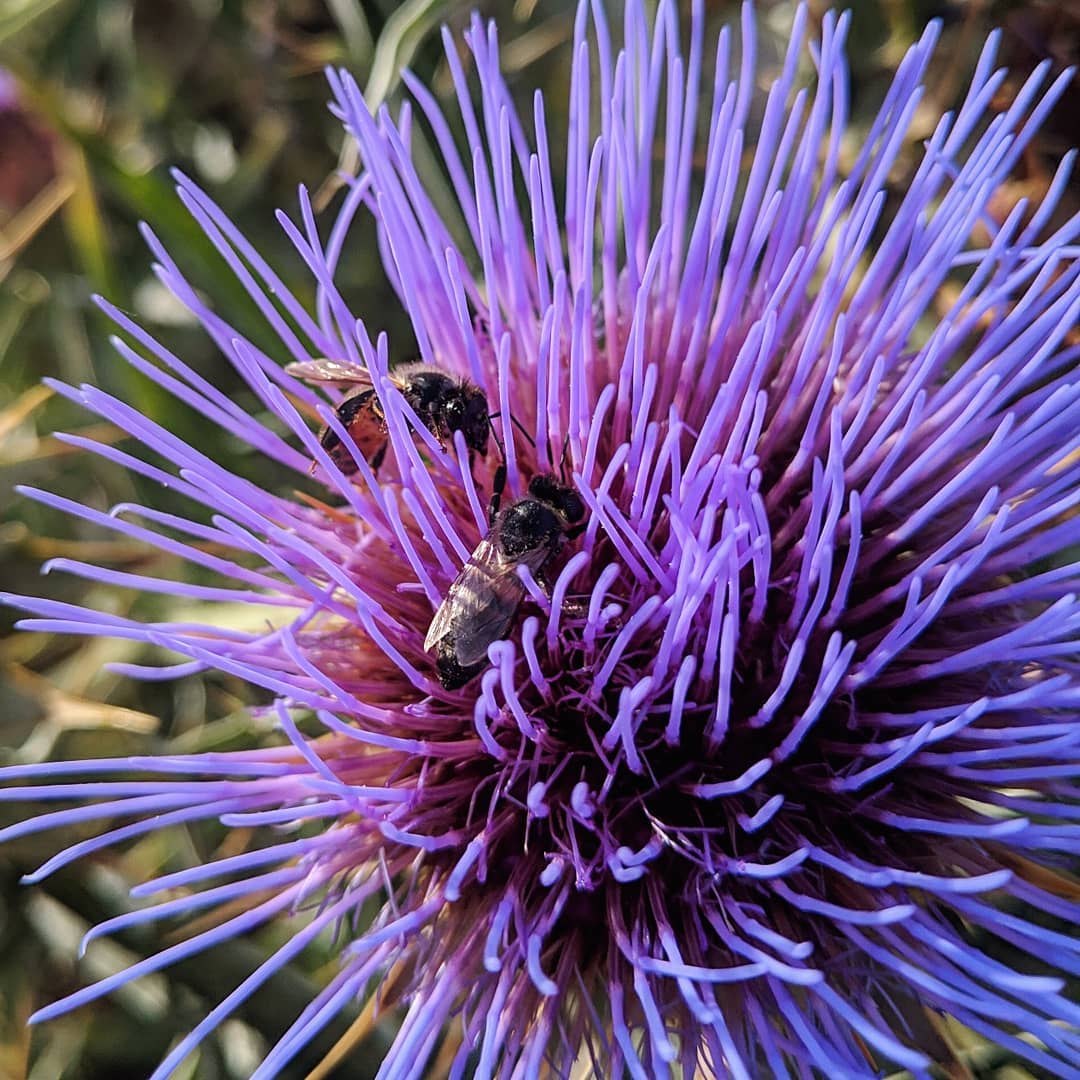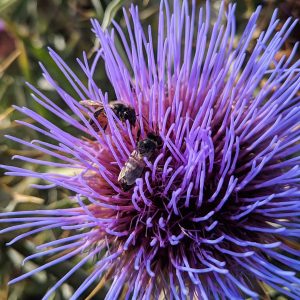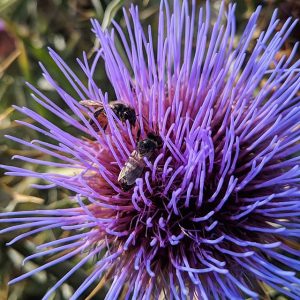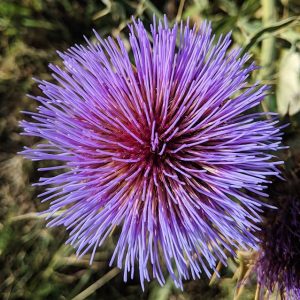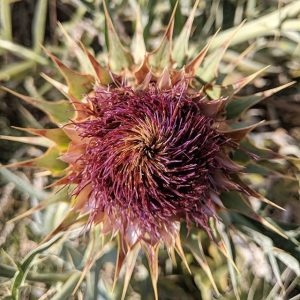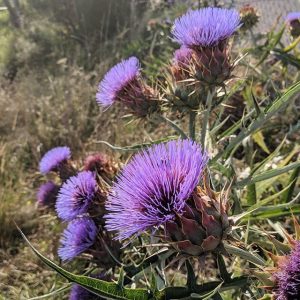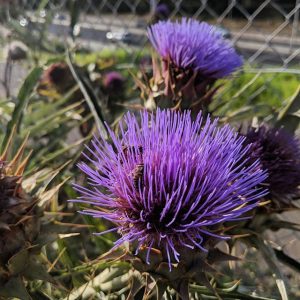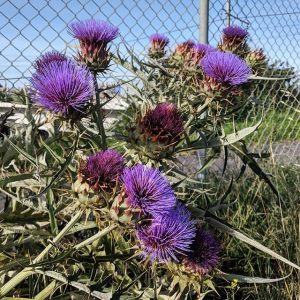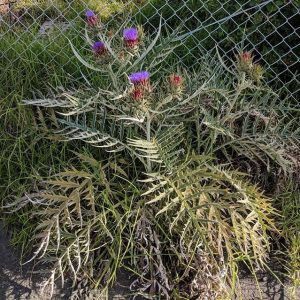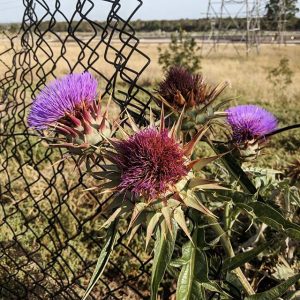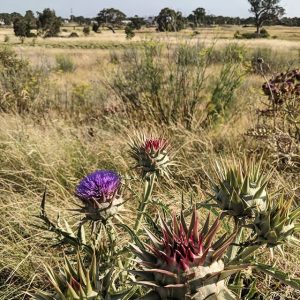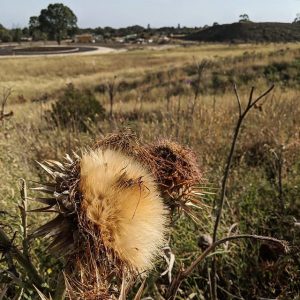Artichoke Thistle (Cynara cardunculus), a signature of landowner neglect throughout the basalt clay of Melbourne’s north and west peripheral.
This Mediterranean plant was listed as a naturalised weed in Joseph Hooker’s 1859 account of Australian flora. In Victoria, Artichoke Thistle was noted as ‘a serious nuisance in the valley of the Darebin Creek and many other districts’ in an 1889 newspaper account (The Argus, 09/01/1889). In 1921, Artichoke Thistle was proclaimed under the Thistle Act 1890 (Vic); two years later it was among an initial tranche of plants selected and proclaimed under that legislation’s successor, the Vermin and Noxious Weeds Act 1922.
However, subsequent attempts to enforce the ban throughout the state stoked repeated outcry from dairymen convinced that artichoke thistle, slashed and stored or simply grazed from infested fields, was keeping their stock alive during lean periods. ‘We don’t look on this weed as a pest in our district,’ the president of McIvor Shire told the Minister for Lands (Herald, 24/09/1929). That same year, The Age reported of Thomastown (* still infested today), that ‘Artichoke thistles in this district have, owing to the wet weather, grown to an enormous size. Many of the plants are over seven feet high, with stems three inches in circumference, each plant covering a radius of 15 feet’ (07/12/1929).
The initial effect of the controversy, coming as it did in the midst of a depression, was apparently to popularise ‘cultivation’ of the thistle, such that by 1932 the Hurstbridge Advertiser proudly noted of the area around Bundoora that ‘As a result of the controversy some three years ago farmers have experimented with the thistle … so many dray loads have been carted for miles, solving a real problem in a time of financial stress, that some folks are considering the abandonment of large areas to the thistle for the sake of its fodder value.’ (30/09/1932) The fad was shortlived; the very next year, the same paper was noting ‘the impossibility’ of getting rid of the plant, and that many tenant farmers were getting caught out by leases which placed the onus on them to destroy noxious weeds.
View Original Post on Instagram
Search for information about Cynara cardunculus in the Flora of Victoria
View information and occurrences of Cynara cardunculus on the Atlas of Living Australia
